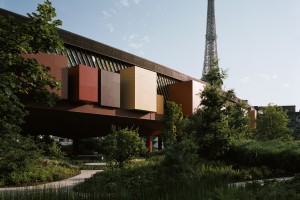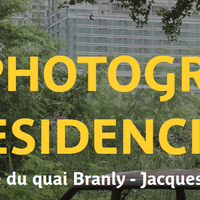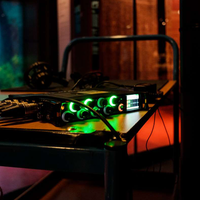Quai Branly Museum, France
[caption id="attachment_1013" align="alignnone" width="300" caption="musée du quai Branly, museum building views. The garden scenography had been realised by the gardener, botanist and landscape architect: Gilles Clément, with the corporate patronage of the GDF SUEZ Foundation. © musée du quai Branly, photographer Cyrille Weiner."] [/caption]
[/caption]
 [/caption]
[/caption]
 [/caption]
[/caption]
The creation of the Quai Branly Museum (musée du quai Branly) Paris, France, an institution entirely dedicated to the arts and civilizations of Africa, Asia, Oceania and the Americas, was the result of a political desire to see justice rendered to Non-European cultures.The project was implemented in two phases - the first being the opening of the Pavillon des Sessions, at the Louvre, in April 2000. By exposing visitors from throughout the world to one hundred and twenty masterpieces selected for their aesthetic appeal and evocative power, the Pavillon des Sessions rooms constitute a manifesto in themselves, an initial response to the debt that Western cultural institutions owe to non-European societies. The project’s second major phase sprang from the decision to devote specific premises to the exhibition of works from French collections under the best possible conditions, and to the presentation of the cultures from which they came. Under the dual supervision of the Ministry of Culture and Communication and the Ministry of National Education, Research and Technology, the musée du quai Branly brings together, within the walls of Jean Nouvel’s beautifully-designed building, the collections housed at the National Museum for African and Oceanic Art (Musée national des arts d’Afrique et d’Océanie) and those from the ethnology laboratory of the Museum of Man (Musée de l’Homme). The musée du quai Branly opened its doors to the public on June, 23, 2006. Over the five years the museum welcomed more than 7 million visitors. As a museum of arts and civilisations, the musée du quai Branly has a dual purpose : conserve and exhibit its collections and to promote research and teaching on the works they contain and on the societies form which they came. Some 3500 works out of the 300,000 contained in the collections are on permanent public display, constituting the museum’s permanent exhibition ‘reference display area’. Organised both geographically and thematically, this take the visitor on a journey across the world’s other continents and highlight a number of major themes running through the collections. A larger number of items are put on public display during temporary exhibitions, to which half of the total exhibition area is devoted. The museum organizes eight of these per year, each with its own commissioner – at least half of whom will be consultants brought in from outside the museum. Major emphasis is placed on lectures, teaching and research – an activity designed to meet two objectives: to develop production of scientific ideas and to help guide design of exhibitions and events aimed at the general public. Music, dance and cinema play an equally important role. The collections stir new emotions in the public, helping to raise its curiosity and to bring recognition of the genius of non-European civilisations. They remind us that our history is closely linked to those of the countries that produced these works.
ASEMUS was very helpful in the creation of the musée du quai Branly, with the development of its exhibitions and the cooperation policies as well as the documentation of the collections. The network gained strength due in part to the networking, the high quality of the interpersonal relationships, and the trust built between professionals and institutions.Collection size: The objects in the collection come from the following geographical regions: Africa (89,000), Asia (72,000), Oceania (33,000) and the Americas (106,000). The collection is also comprised of four essential groups: 700,000 photographs, 10,000 musical instruments, 25,000 textiles or pieces of clothing, 8,000 works and documents from the History collection (drawings, prints, engravings, paintings, sculptures, furniture…), as well as 320,000 textual documents (books, periodicals, archival documents...). Collection: The collection housed by the musée du quai Branly is a diverse one, both in its geographical scope (Africa, Asia, Oceania and the Americas) and in its composition (photographs, textiles, sculptures, masks...). It is the result of a long and varied history, from the kings of France to the great 20th Century ethnologists, to the explorers. The collection of the musée du quai Branly, protected and conserved by a series of institutions from the 17th Century up to the present, has been reunited under one roof since the creation of the museum in 2006. A part of the collection comes from the collection of ethnology from the musée de l’Homme – created in 1937 and heir to the musée d’ethnographie du Trocadéro – the other part comes from the musée national des Arts d’Afrique et d’Océanie – former musée des Colonies, a museum founded in 1931. The Asian collections shed light on contemporary societies and cultures, whether nomadic or sedentary, rural or urban, through their everyday life, traditions and beliefs.
Similar content
deadline
15 Mar 2020
deadline
15 Mar 2019
deadline
31 May 2014
from - to
19 Jun 2012 - 30 Sep 2012
deadline
15 Sep 2011
deadline
18 Feb 2024





